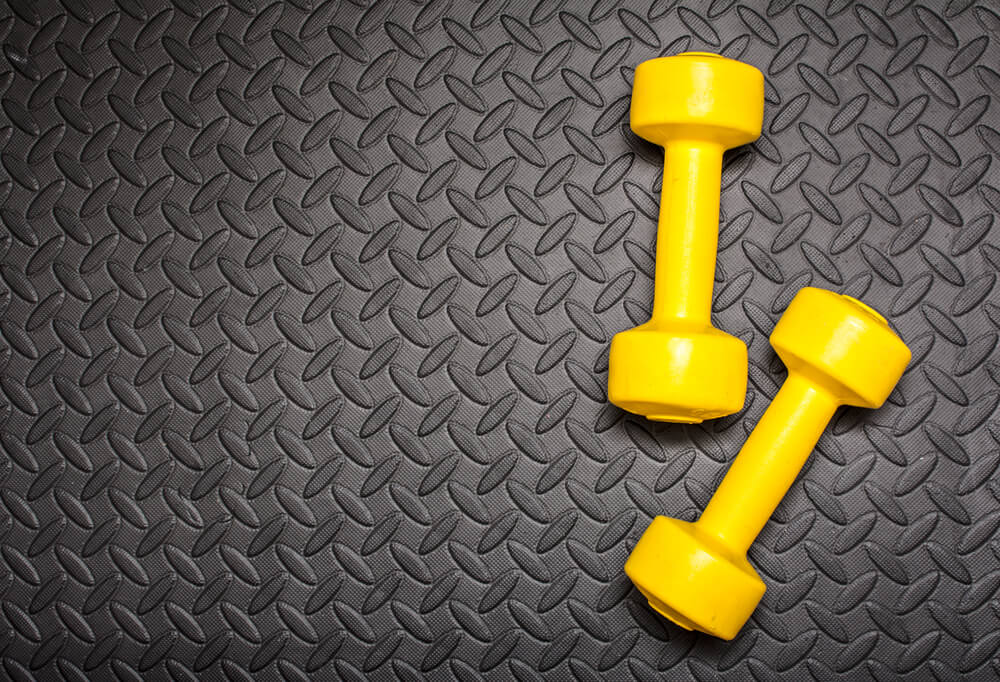 What are the biggest mistakes made in the gym? Here’s our list and how to solve them.
What are the biggest mistakes made in the gym? Here’s our list and how to solve them.
Ever hit a plateau in your training? Don’t have the motivation to hit the gym anymore?
Like work, relationships and everything else in life, we go through down periods in the gym. That’s normal. It’s how we break out of the funk that defines us.
Want to increase that bench press?
Looking to lose a few extra pounds?
You can do it. No, there is no magic pill that will help you break down those barriers. From sticking to a plan to being focused in the gym to maximizing your workout time, you can improve any workout with tips like those and some hard work.
Every gym session should have a purpose. Far too often, people walk in through the gym entrance without a plan. Working out without a specific plan is the equivalent of going into a presentation at work without any supporting materials. Without a plan, your workout will probably end up with a little bit of walking on the treadmill, a couple sets of biceps curls, some calf raises, a few upper body and lower body machine exercises and a little core work at the end. The workout has no rhyme or reason.
What are your goals? How many days per week are you available to work out? How much time do you have?
Setting specific goals is critical to success. Want to improve your workout? Be specific and work toward that goal with a detailed plan. With a workout regimen tailored toward your goals, you can succeed. Be sure to write down your weights and reps and to track your progress. Next time you’re in the gym, you can aim to improve from there instead of walking around pondering what you should do next.
It’s all about routine, routine and routine.
We are all creatures of habit. We like to go to bed at the same time every night, wake up at the same time every morning and eat at the same times during the day. Your body adapts and settles into a routine. If you can make the gym a part of your routine, your body will adjust and be ready for it.
Do you normally work out at 10 am?
Try to keep that time open five days per week so you can train. Your body will get used to that specific time and your performance will be stronger. If you work out at all different times of the day, your body will struggle a bit more to adapt. Whether you work out on your lunch break, early in the morning or after work, find the time that suits you and mark it in your daily planner.
You Need To Stick To The Basics.
Commercial gyms are lined with cardio machines, dozens of weight machines and all the newest equipment that will help you reach your goals. It can be intimidating seeing all that equipment and not knowing what to use. But, it doesn’t have to be. For one thing, you don’t have to use every piece of equipment in the gym. Instead, stick to the basics and keep it simple.
Don’t opt for the calf raise machine or leg extension. Hit some squats instead. Instead of the abs crunch and twisting abs machine, do some sit-ups, inverted rows and planks. Having too much equipment can over-stimulate your senses. It can be overwhelming.
] For some it is a sanctuary from a stressful workplace or home. Don’t overthink things in the gym and instead focus on the basics. Stick to compound movements such as squats, rows and presses that hit multiple muscle groups and keep it simple.
Does The Beat Matter When It Comes To Any Workout?
Ever forget your headphones at home and were stuck without your music during your workout? Chances are you didn’t have as strong a workout because music has many benefits.
First, it is a good type of distraction. When you go to the gym, it can often be an escape from the everyday stresses of life. With your music, you are able to block out the outside world and get in the zone for your workout. Finding your tune is also beneficial because it can elevate your mood and make you work faster.
Before you step under that squat bar, have you changed your music player to your favorite song?
According to a study, music can increase athletic performance up to 15% and you are less likely to notice how hard you are working because of the positive distraction. Next time you head to the gym, make sure your headphones are packed. As an added bonus, they’re also useful when you see that one person at the gym that always wants to stop and chat. Your headphones can give you an out!
Workout and Leave Your Troubles Behind.
There are unwritten rules in the workplace to leave your personal life at home. When you get home, you usually try to leave work at the office.
So why not apply the rule of leaving everything else behind when you’re at the gym?
Far too often, we are glued to our cell phones. That phone is a constant at the dinner table, at work, at your bedside and at the gym. Don’t be one of those gym-goers who spend half their workout texting, checking e-mails or answering phone calls. Phones are a negative distraction so turn it off or turn it onto airplane mode where you can only listen to music.
Are you stressed out at work?
Leave the office and hit the gym. And, leave the phone behind as well. That e-mail you need to reply to will still be in your inbox in 60 minutes and your spouse will understand if you wait to reply to their text message until after the gym. Focus your attention on you during a training session and leave everything else behind.
Don’t Overwork Yourself.
Find yourself in the gym every day for at least an hour? Cut it back. Yes, working out less may actually help you reach your goals. Your body is similar to a car. If you put a ton of miles on your car, there are generally more problems with it and it requires regular maintenance to continue running. Your body also requires regular maintenance. But, most importantly, it needs rest.
During the rest period, the muscle-building process takes place. Each strength training session, with every rep, muscle fibers undergo small tears. Those small tears then replace themselves and come back bigger and stronger during the rest period.
Overtraining is very common among athletes and anyone working toward a goal. Ever pull two-a-days because you wanted to lose a few extra pounds? Stop that. Consistently putting your body through the gantlet without proper maintenance can result in overtraining syndrome.
Lack of motivation, hitting a plateau, chronic soreness, muscle loss, higher blood pressure and poor sleeping are symptoms of overtraining. Giving your body a rest to recharge the batteries is a good thing. Schedule regular days off, don’t overwork any single muscle group and treat your body like a sports car with regular stretching sessions and massages.
Take A Balanced Approach.
Any workout program should hit the entire body and target muscular weaknesses. Far too often, people have postural problems due to muscular imbalances. Much of this can be attributed to a poorly balanced workout regimen. Every training program should try to hit all areas of the body as equally as possible.
If you focus on your chest too much with a variety of pushing exercises and neglect your back, the front of your upper body will be comprised of tight muscles and rounded shoulders with the back of your upper body underdeveloped. Splitting your workout routine by body part works for some. However, if you miss a day in the gym, that body part is left lagging behind while the rest of the body goes ahead because it was worked previously during the week.
Instead, try the approach of full-body training each workout. Opt for movement patterns instead of specific muscle groups. Incorporate pushing exercises such as an overhead press, pulling exercises such as a lat pulldown, a hinging movement such as a deadlift, as well as squats and single-leg work. If a workout is missed during the week, your body won’t lag behind as you are hitting the full body each workout session.

Inject Some Variety.
Every fitness magazine has a new workout, which can be very tempting to try out. Not only is it something different to prevent you from boredom, but it can also shock your muscles in a positive way.
Stepping into the gym and trying a new workout every time does not allow your body to progress.
The best way to make progress in the gym is to follow a specific program tailored to your goals. Each week, increase the weights or reps and break it up into four to six-week cycles. To avoid plateaus, variety is needed though, not only physically but sometimes mentally as well.
Lacking motivation because you’ve been doing the same lifts for six weeks is something you can prevent. Plan a day of circuit training or switch up one lift per week such as hitting front squats instead of back squats. Implementing variety strategically instead of just randomly will keep you moving in the right direction.
Do Not Make Excuses!
Ever hear the excuse that someone doesn’t have enough time to work out? There are 24 hours in a day so that should never be an excuse. We have all become busier and busier over the years. Maximizing workout time is very important. From work to relationships to family to other things in life, the gym can fall down the priority list.
Map out your day and figure out how much time you can budget for training. Only have a half hour on your lunch break? Perfect. If you were planning on being a powerlifter, a half hour isn’t going to cut it. For everyone else out there, a half hour can work just fine.
Implementing strategies such as super setting or high-intensity interval training can cut down on rest breaks to maximize time in the gym. Not only will you work up a sweat and feel the burn in your muscles, but you will also do it in an efficient manner.
You don’t have to be in the gym every day for three hours to reach your goals. Sure, there are some people like that, but not many have that time in their lives to devote to fitness. Instead, whether you are in the gym for 30 or 60 minutes, plan your workout ahead of time, cut down on rest breaks and give full effort.
Conclusion
Reaching your goals requires hard work and determination and there is no easy button to get you there. It doesn’t have to be an overwhelming process though. Set a goal, map a plan and follow these simple tips to improve each and every workout. From getting into a routine, to cutting out distractions and becoming more efficient during your workouts, every little thing helps.
These are just a few of the many ways that will keep you moving in the right direction and coming back to the gym for more. And with these tips, you’ll be returning to the gym with ever-increasing rewards!
-By Adam Clark, CPT
Latest posts by Terry M (see all)
- Garage Gyms - Aug 1, 2018
- Kettlebells – Why They Should Be Added To Your Routine. - Jul 24, 2018
- Weight Belts: What Are They Really For? - May 31, 2018











